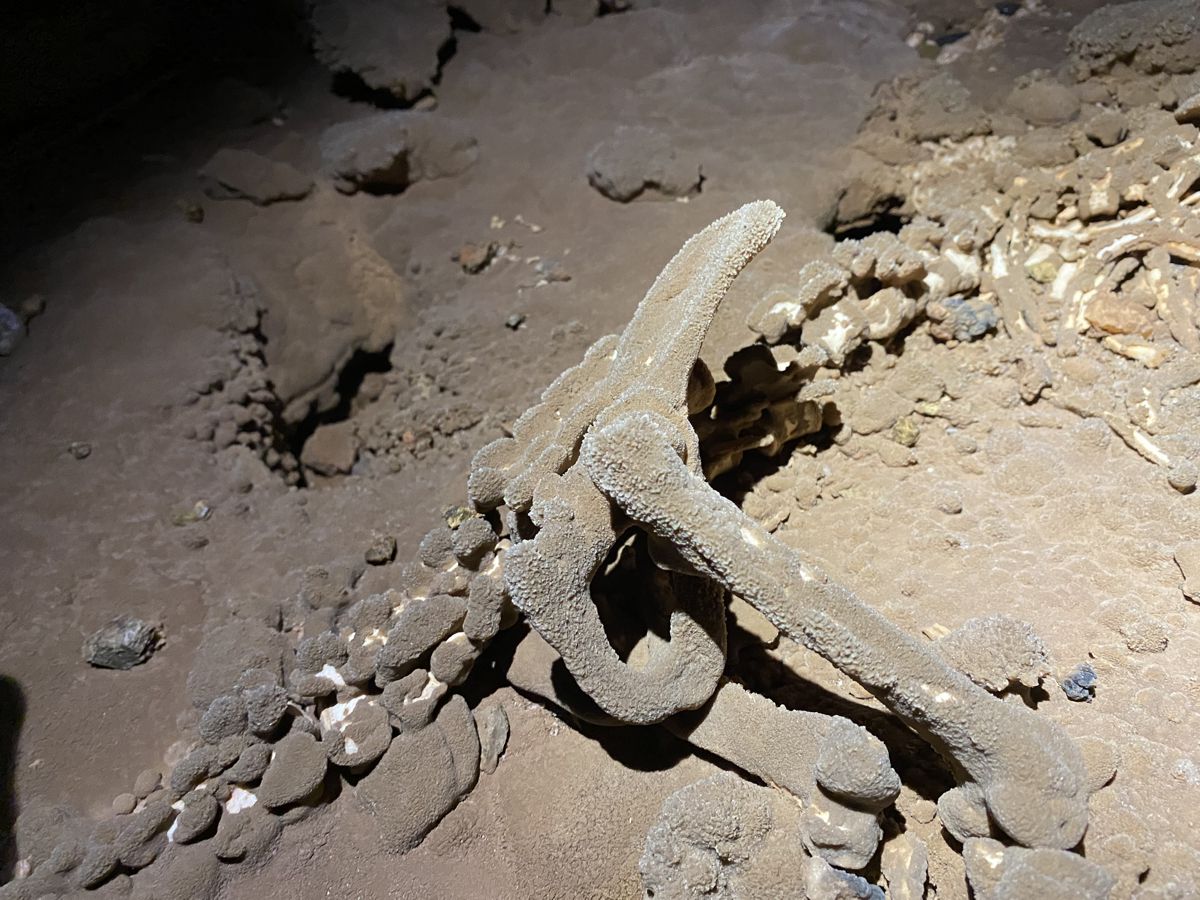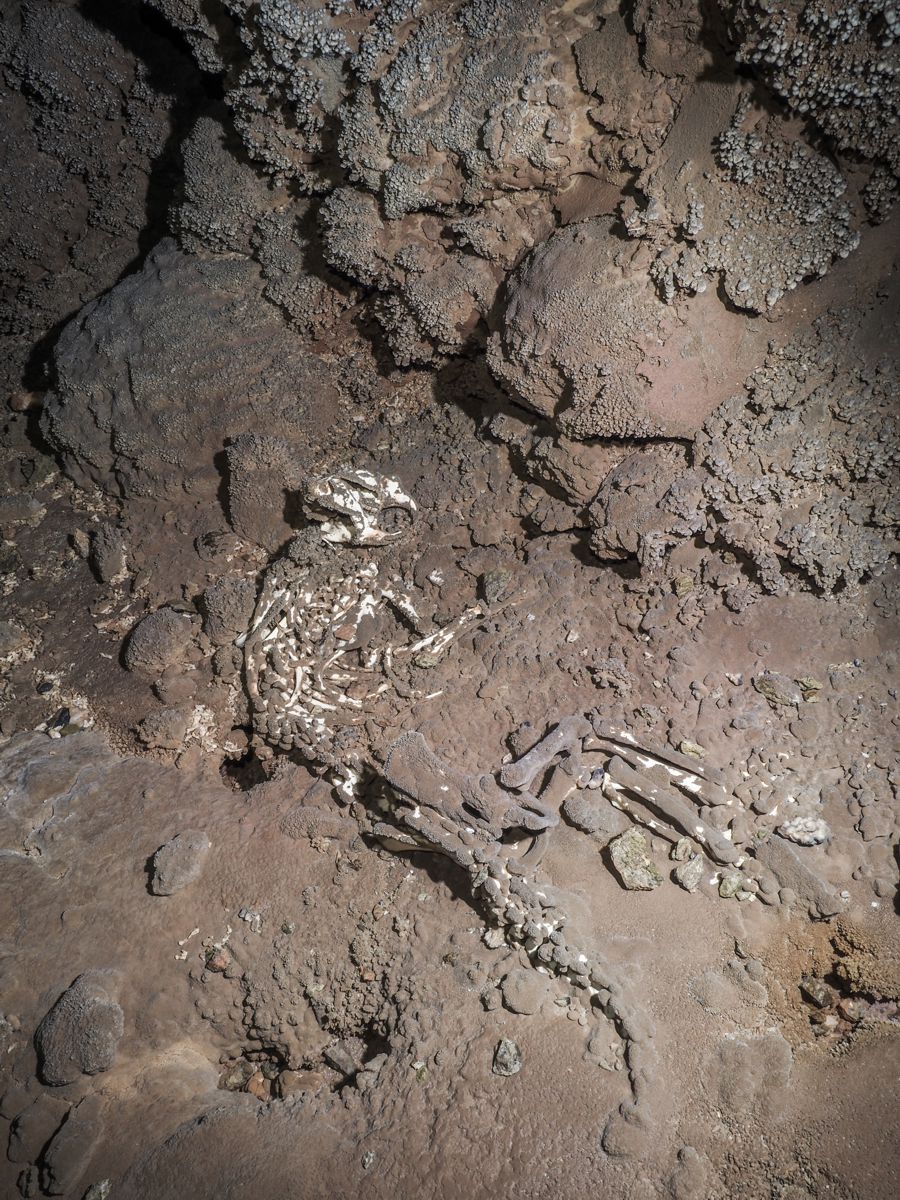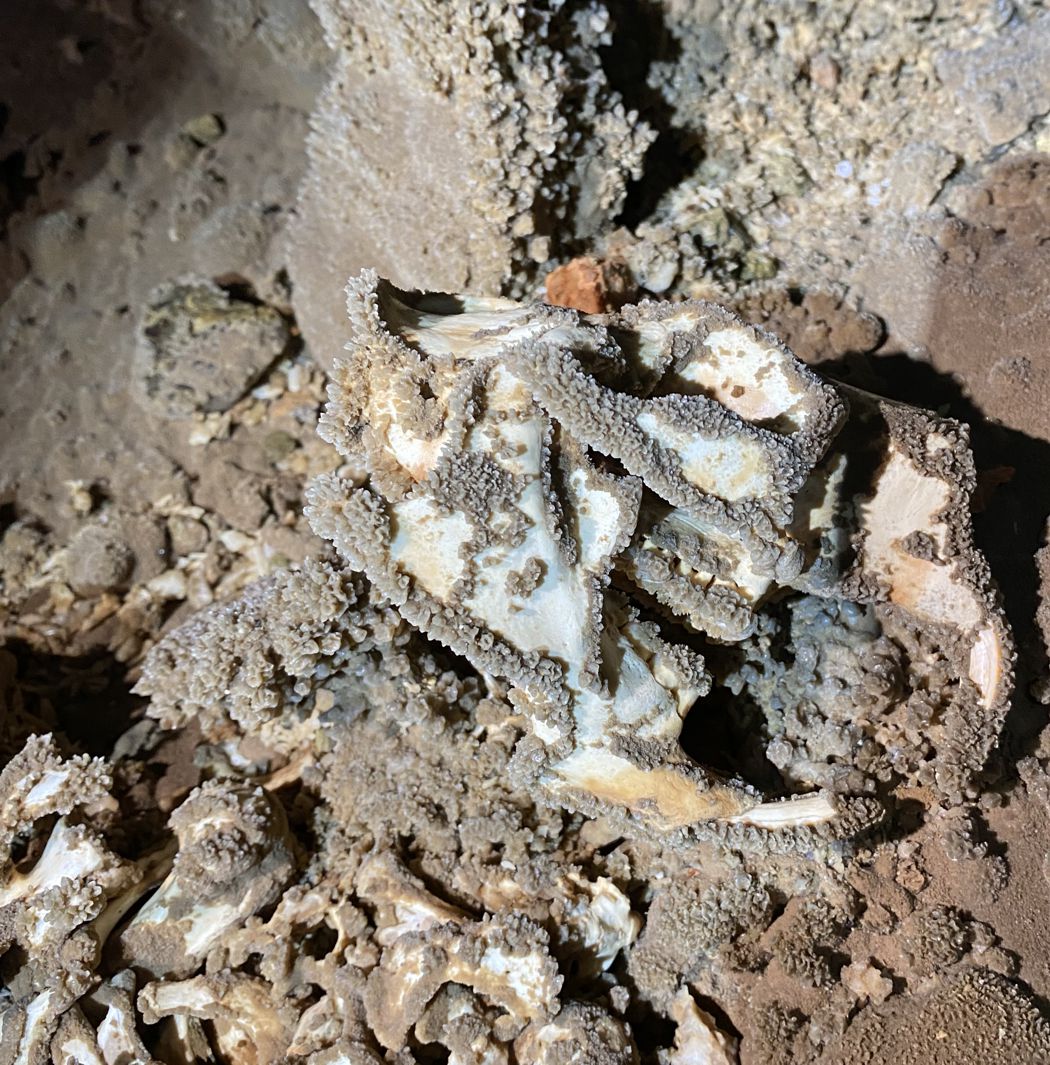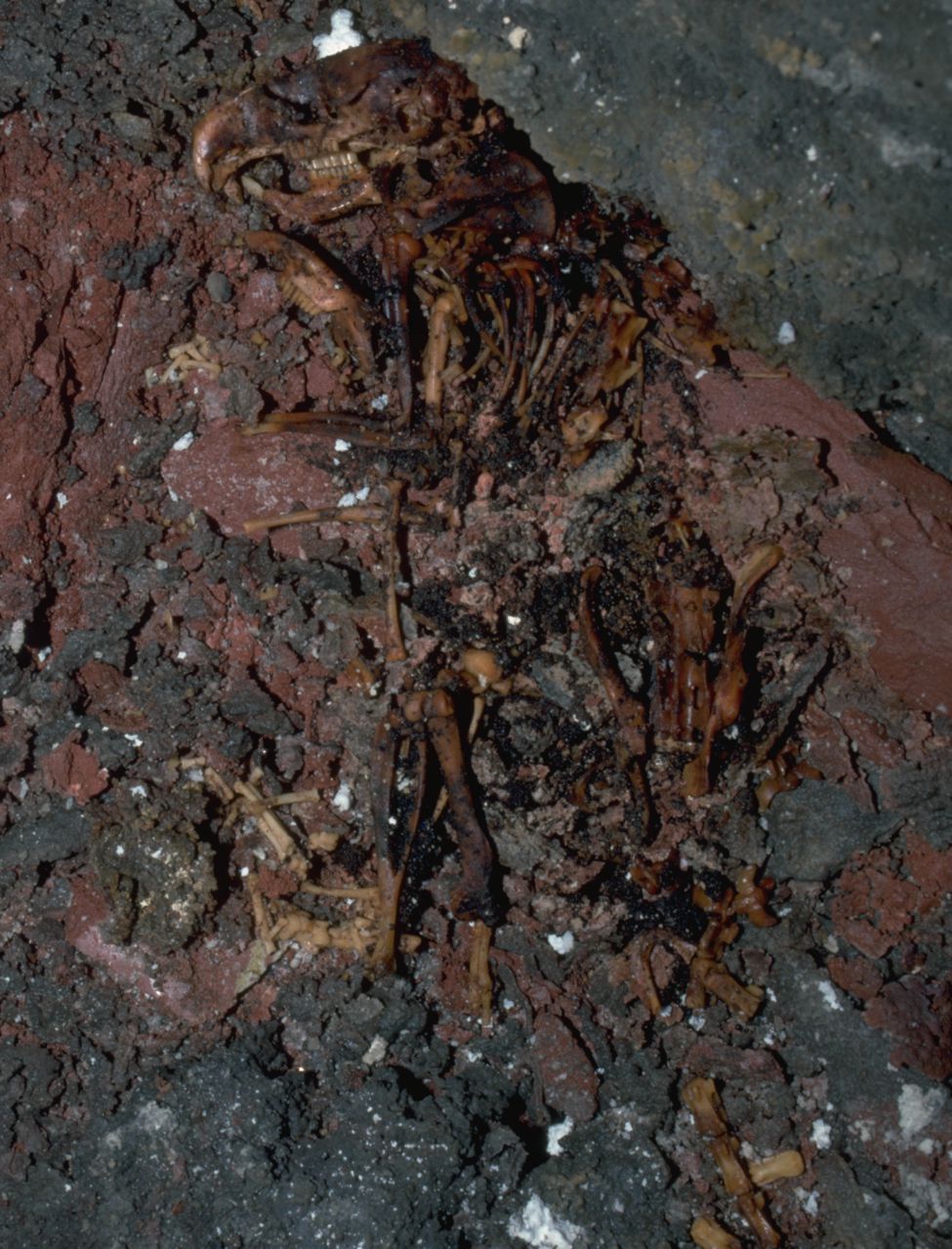
Caves can provide a safe resting place for the remains of ancient animals
Caves can be very dry and never change temperature, creating a perfect repository of the past
The caves of California are rich in paleontology
Caves are so long lasting and can be so unchanging, that bones last in them for vast periods of time. This is different from fossils, which have been turned to stone. Fossils are common in some of the rocks that contain caves, like limestone, and fossils often appear in cave walls. But inside of caves, the bones, stay bone.
Caves can be thought of as nature’s storehouse or maybe even nature’s museum. Water forms limestone cave passages, but the passage of time and the constant forces of erosion cut downward, lowering streams and leaving upper cave passages high, dry and nearly unchanging. Deep inside of caves, passageways and rooms take on the average temperature of the surrounding landscape. With the insulation of vast quantities of overlying rocks, the temperature barely changes for hundreds or even thousands of years. There is no rain and no snow. Sometimes there are cave winds, but these are steady. There are never storms or unusually strong winds that could damage a delicate bone or blow away a cultural artifact. California caves are important museums in a diverse and dynamic state. Underground, in our caves, the curious, researchers and scientists can find clues about the past.

Bones can become incorporated into growing cave formations, or they can be preserved in dry cave sediments. Sometimes predators had dens in caves with the remains of their kills later preserved underground. Today ancient bones in caves can be laser scanned in great detail for identification without actually disturbing the bones.


The caves of the McCloud Limestone in Shasta County have been famous for more than 140 years for the remains of extinct, ancient animals found inside the caves. The first discoveries were made in 1878 by James Richardson. Researchers from the University of California, working from 1902 through 1905, found the remains of 52 species in the sediments of Potter Creek Cave and explored many other nearby caverns. The short-faced bear, named Arctodus, discovered in this cave, may be one of the largest mammalian carnivores ever with weights up to 1,500 pounds. The discover of these animals changed our understanding of the history of the animals of the western US, and revealed a long lost fauna and world.